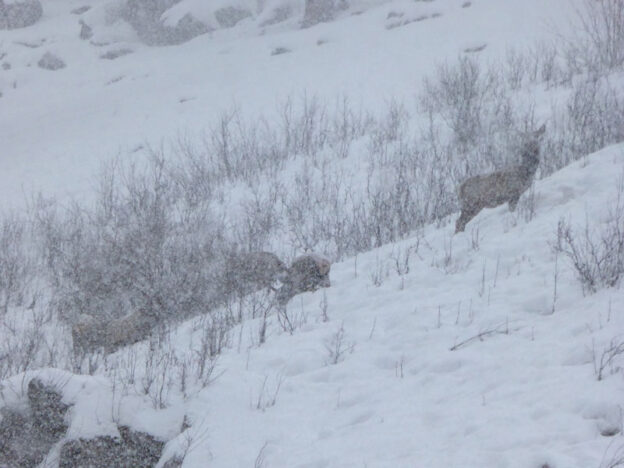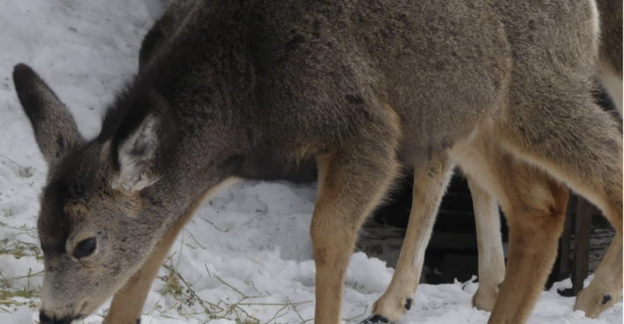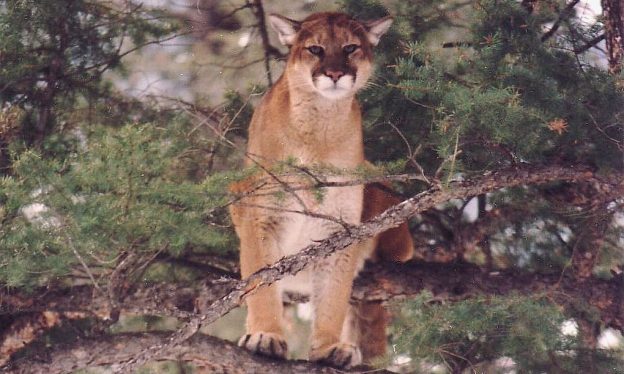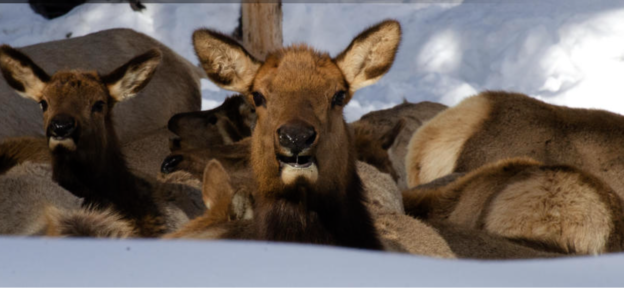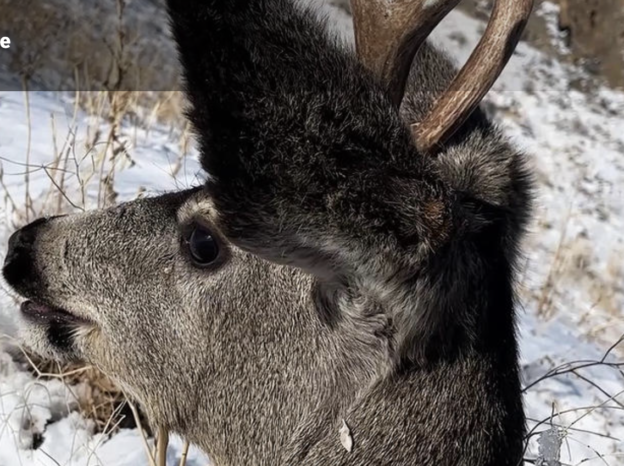Fish and Game staff from the Magic Valley Region continue to receive frequent mountain lion reports from throughout the Wood River Valley. Mountain lions are killing deer and caching their prey in Ketchum and Hailey neighborhoods, and residents are seeing lions on security cameras and reporting tracks around their homes from Bellevue to Ketchum. Recently, a dog was injured by a mountain lion in Hailey.
To keep both residents and pets safe, Fish and Game is urging everyone to be vigilant and aware of their surroundings, especially during early morning and evening hours when mountain lions are typically more active, although sightings of mountain lions have been occurring throughout the day.
Public safety is always a priority
Mountain lions are common throughout Idaho. While lions are seen throughout the year, observations and incidents do tend to increase during the winter months due to fresh snow making their tracks more visible, along with increased numbers of deer and elk moving onto their winter ranges, which are often in close proximity to local communities.
“We hear reports that some in our communities advise against calling Fish and Game when a mountain lion or black bear is seen in a neighborhood or becomes involved in some type of conflict because there is a perception that calling will always result in animals being euthanized. That statement is not true,” according to Regional Supervisor Craig White, “we will always encourage local residents to notify our office if they observe a lion or their tracks around their homes or come across cached prey, or in the case of black bears, find that a bear has gotten access to their garbage.”
White also noted, “our conservation officers and wildlife biologists are always willing to work with local residents to make sure that they and their pets stay safe. Our goal is not to remove predators like mountain lions and bears from the landscape, but instead to encourage them to continue to live in natural habitats, outside of our communities. Fish and Game has options to deter wildlife, such as hazing, only resorting to lethal removal if an animal has become aggressive when living among people and is determined to be a threat to public safety.”
Even with a number of reported sightings and encounters, there have been no reported attacks on people. However, in rare situations over the past three years, pets and livestock have been killed or injured by mountain lions with some reports of cats disappearing from their homes, presumably from lion predation.
Despite hundreds of reports over the last five years, only four mountain lions have been lethally removed by Fish and Game in the Wood River Valley due to public safety concerns after human-wildlife conflict situations.
Personal safety around mountain lions
Wildlife managers agree that if a person is in close proximity to a lion, meaning they see it, they should:
- NEVER run away from a mountain lion. The lion’s instinct is to chase and ultimately catch what they perceive as a potential prey.
- NEVER turn your back on a lion. Always face them while making yourself look as large as you can. Yell loudly, but don’t scream. A high-pitched scream may mimic the sound of a wounded animal.
- SLOWLY back away while maintaining eye contact with the lion.
- Safety equipment you may choose to carry could include bear spray, a noise device, like an air-horn, and if you walk in the dark, a very bright flashlight.
- If you are attacked, fight back!
Tips to reduce human-wildlife conflicts
Homeowners are asked to check around their homes and reduce the potential for a lion to find refuge around their homes. Areas under decks should be blocked so that lions cannot access the space for a day bed. All doors to barns and backyard sheds should be securely closed so that lions cannot gain access to these spaces.
When letting pets outside, especially at night, turn on porch lights and make noise so that any wildlife that might be in close proximity is alerted. Attacks can often be the result of surprise encounters, with both people and pets.
Prompted by concerns for public safety after increasing cases of human-wildlife conflict in the Wood River Valley in 2019 – 2020, a group of Blaine County partners came together to cooperatively work towards a Valley-wide goal of reducing negative interactions between humans and wildlife. The Wood River Valley Wildlife Smart Communities coalition has developed a website that residents can use to learn more about how to safely live in proximity to wildlife www.wrvwildlifesmart.org.
Residents across the Magic Valley should immediately report any wildlife incident or attack to the Magic Valley Regional Office at (208) 324-4359 during business hours, 8 a.m. – 5 p.m. Monday – Friday, or to your local law enforcement agency. Mountain lion sightings and encounters should be reported to Fish and Game during regular business hours by calling the Magic Valley Regional Office at (208) 324-4359.
